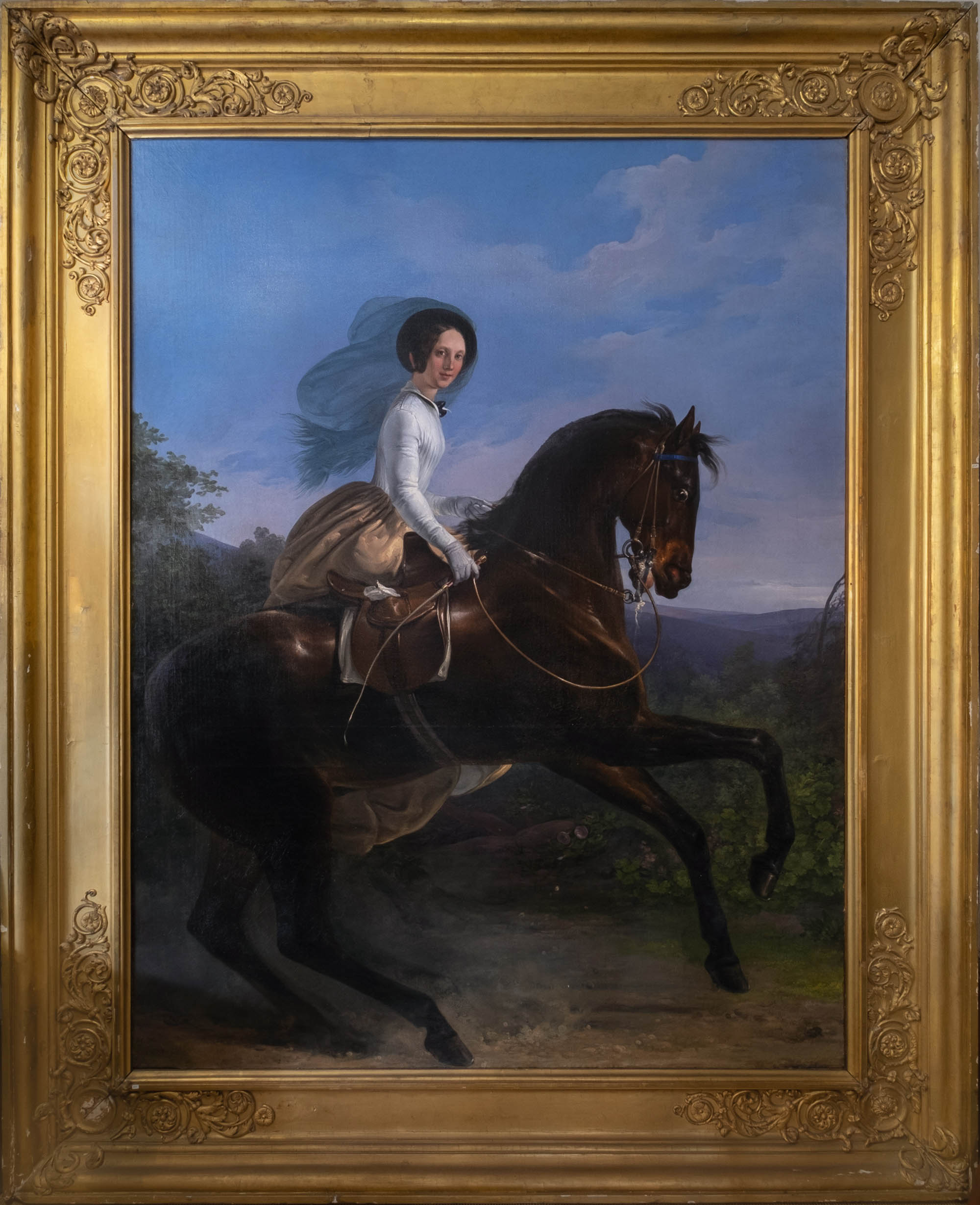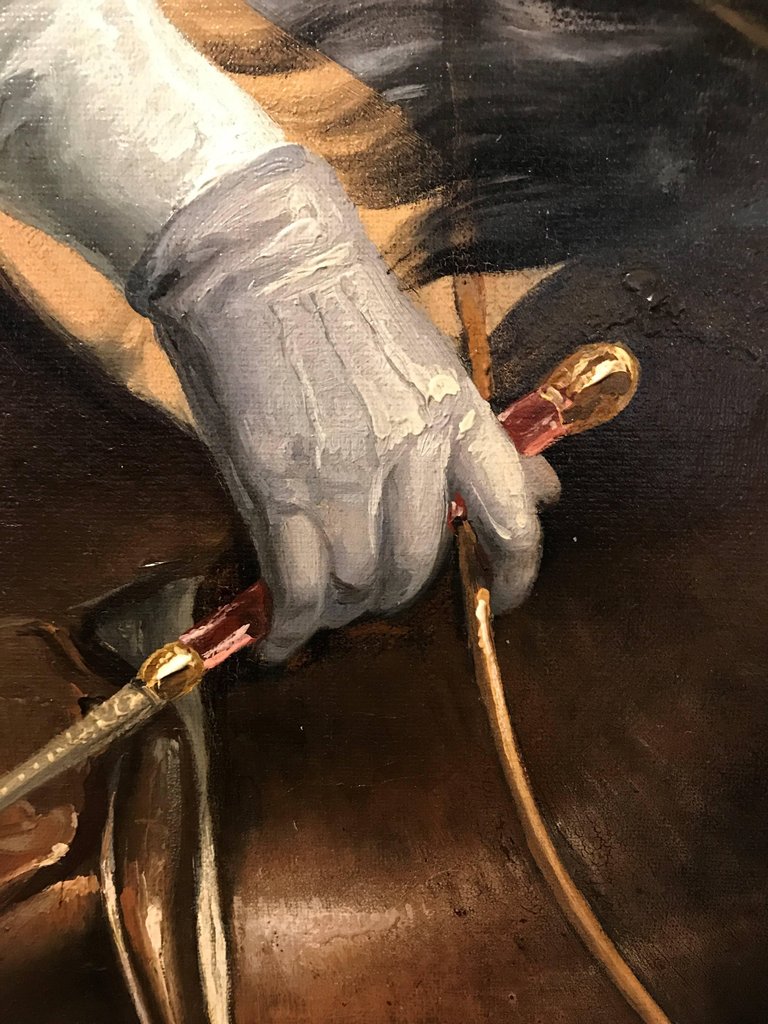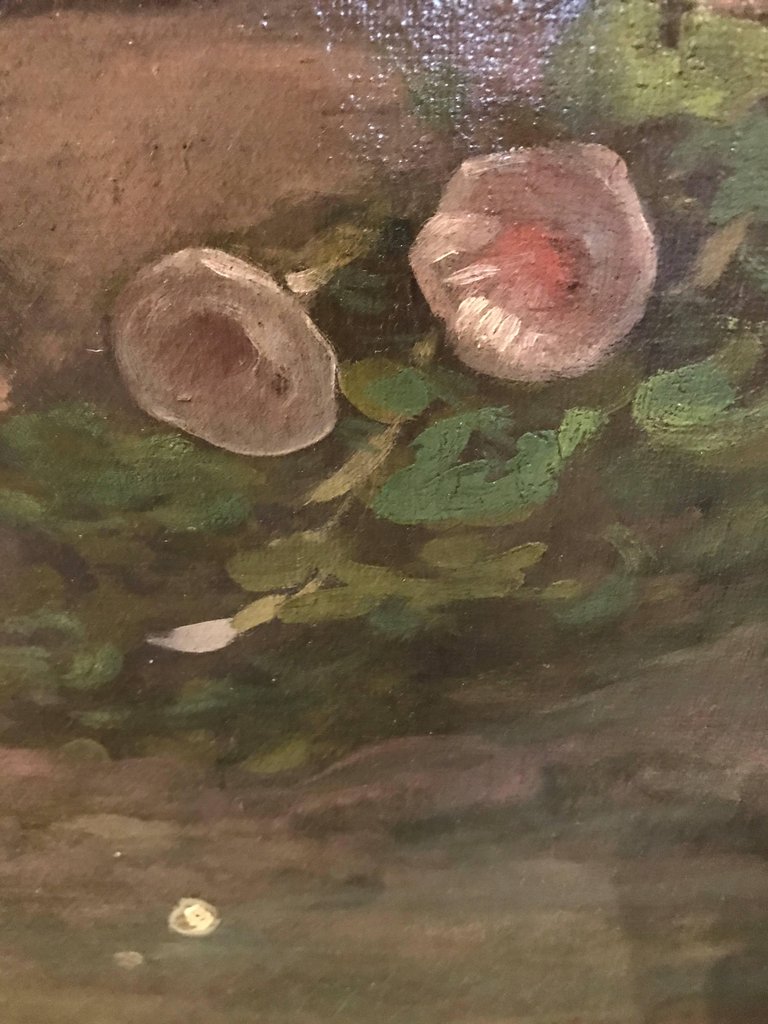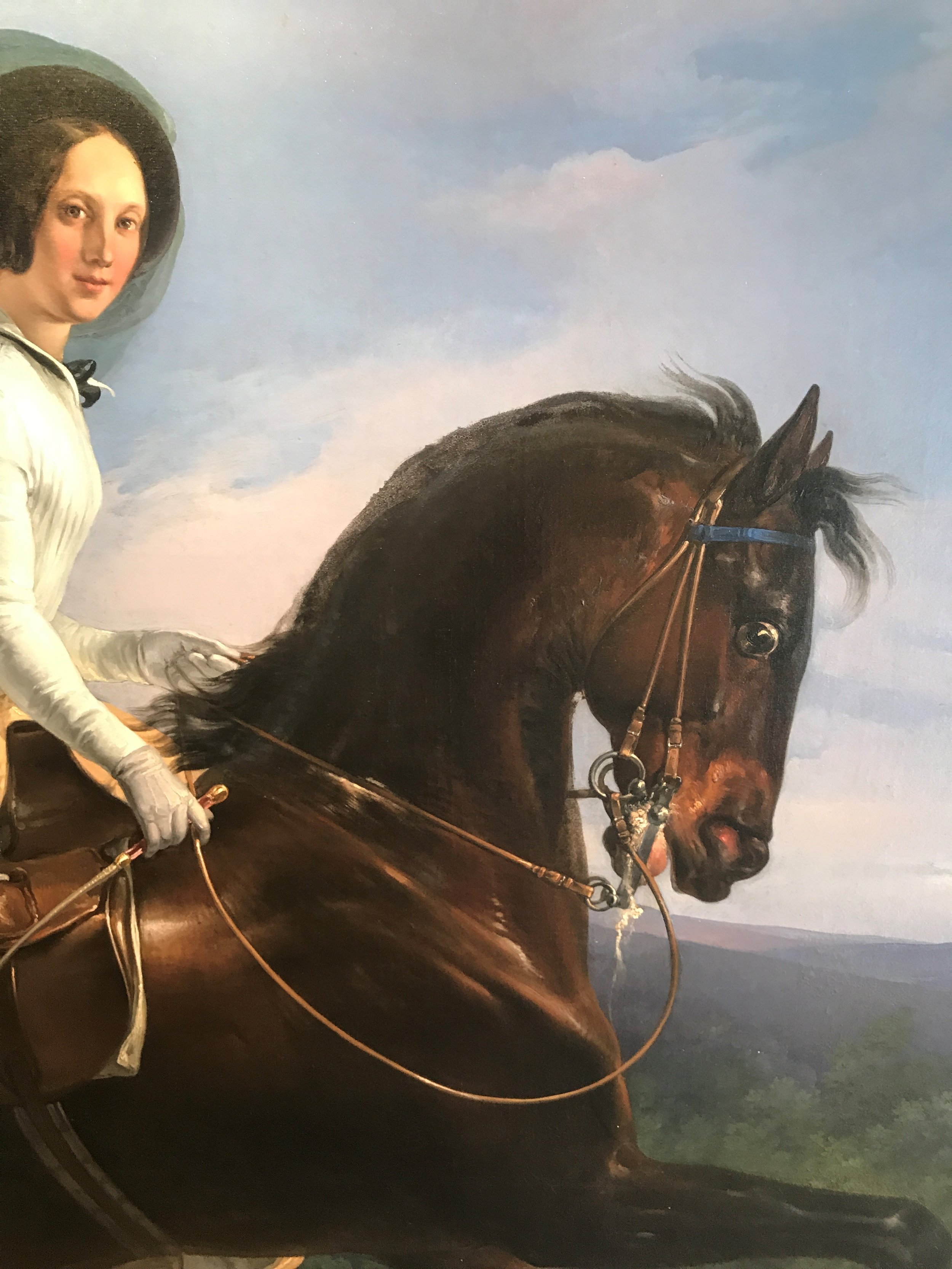Henry d’ANNECY, Le Comte MONTPEZAT (French 1817-1859)
Portrait of Princess de Joinville riding a Bay Horse
Painted circa 1837-9
oil on canvas
92 x 70 inches;
113 x 92 inches, inc. frame
Price: Price on Application
Provenance: Private Royal Collection
This magnificent portrait depicts Princess de Joinville, the daughter of Pedro I, Emperor of Brazil and the King of Portugal. Through her illustrious family, she was directly related Alexander III and Nicholas II of Russia and the Russian royal family, as well as to many of the great ruling families of Europe.
The work clearly confirms Monpezat as one of the most accomplished equestrian portrait painters in France in the early nineteenth century. In terms of scale, quality and dramatic power, it must surely be considered amongst his finest works. The stance of the powerful thoroughbred - in half rear - emphasizes the calm nature and courage of the Princess.
Francisca of Brazil (1824-98) married a son of Louis Philippe I, the King of the French, and had three children. Born at the Imperial Palace of Saint Christopher, her youngest brother was the future Pedro II of Brazil. As such, she was the aunt of Isabel, Princess Imperial of Brazil, and also a first cousin of Princess Maria Carolina of the Two Sicilies, Napoleon II of France and Franz Joseph I of Austria.
Her grand-daughter, Marie of Orleans, was sister-in-law to Alexander III of Russia (her husband Valdemar was the brother to Empress Maria Feodorvovna, Alexander III’s consort), and one of the aunts of Nicholas II, the last Tsar of Russia. A further family tie links Marie of Orleans – through her father-in-law the Grand Duke Konstantin Nikolayevich of Russia – to Alexander II of Russia, the Grand Duke’s brother.
Francisca married François d'Orléans, the Prince de Joinville, in Rio de Janeiro on 1 May 1843. The bride was 19 and the groom 25. Their only daughter Princess Françoise d'Orléans married her first cousin Robert, Duke of Chartres, and became the mother of Marie of Orleans. When the Orléans family fled France, they settled in England living at Claremont. It was there that Francisca gave birth to a stillborn daughter in 1849; the next year, the exiled King Louis Philippe I died himself. During the rule of the House of Bonaparte of the Second Empire, the Orléans family returned to France; Francisca herself died in Paris aged 73. Her husband outlived her by two years dying in Paris in 1900.
Henri d’Aincy, Le Comte Monpezat
The artist came from a noble and aristocratic family in the South of France. His nephew was the artist Gericault and his cousin was De Dreux. There is also a family tie with the painter Vernet. In spite of his illustrious pedigree, he was a highly professional if an unprolific artist, and his work has the finesse and grandeur of the greatest of the French classical painters. This painting has been seen by the President of the French Side Saddle Association, Madame Beatrice Orsoni, who has confirmed the date of the painting through the depiction of the saddle, style of riding, and tack. The dress of the sitter has been confirmed as being of the same date by experts at the V&A Costume Department, London.










